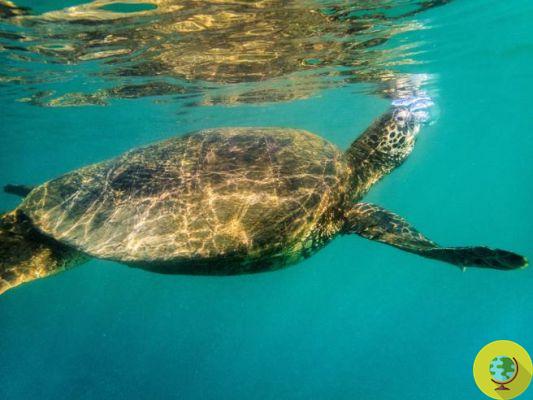
Alarm in the Galápagos Islands: 200 Chinese fishing boats are in international waters near the marine reserve, a UNESCO World Heritage Site
Eventually, fears were well founded as those 200 fishing boats in international waters near the Galápagos Islands Marine Reserve trespassed into the protected area to fish illegally. 'They pull everything up,' explains the captain of an Ecuadorian boat who saw the boats. "We are obliged to take on board a biologist who controls our booty, if we catch a shark we have to put it back in the sea, but who controls them?".
They are vessels flying the Chinese flag and are stationed 118 miles from the Galápagos Islands precisely where the rarest aquatic species in the world live and reproduce. A free area full of fish, but with a very fragile marine ecosystem.
In the Galápagos Islands, the archipelago that inspired Charles Darwin's theory of evolution, "the size and aggressiveness of this fleet against marine species represent a great threat to the balance of species", explains the former minister of the environment, Yolanda Kakabadse.
Together with the former mayor of Quito, Roque Sevilla, Kakabadse was tasked with designing a "protection strategy" for the islands, which are located 563 miles west of the South American mainland. As we know, this is not the first time this has happened. Chinese fishing boats arrive every year around the Galápagos, declared a UNESCO World Heritage Site in 1978, but this year's fleet is one of the largest ever seen in recent times.
"Uncontrolled Chinese fishing right on the edge of the protected area is ruining Ecuador's efforts to protect marine life in the Galapagos," says Sevilla.
Sharks, whales and other endangered fish and mammals are protected by international agreements, as are migratory species. Currently, Ecuador is trying to establish a corridor of marine reserves between its Pacific neighbors, that is Costa Rica, Panama and Colombia.
The president of Ecuador, Lenín Moreno, described the archipelago as "one of the richest fishing areas and a nursery of life for the entire planet", in a message on Twitter.
The Galápagos Islands are also known for their unique plants. Unesco describes the archipelago - visited by a quarter of a million tourists every year - as a "living museum and a showcase for evolution".
We are going to work in a regional position to defend and protect the Exclusive Economic Zone around the Galapagos Marine Reserve, one of the richest fishing areas and a hotbed of life for the entire planet. #SOSGalapagos pic.twitter.com/GzHWBZrT57
– Lenin Moreno (@Lenin) July 25, 2020
Already on July 17 the Ecuadorian Navy had notified the presence of the boats and the Foreign Ministry had protested with the Chinese government “In a friendly but firm way”. In 2017, a large fleet approached the Marine Reserve catching 300 tons of fish, mostly sharks. Even now, the fishing vessels are in international waters, outside the limits of national jurisdiction, which makes the problem complex for the attribution of management and ownership policies.
With the Foreign Minister @lubegach and with the participation of @SevillaRoque, @y_kakabadse and more specialists, I have formed a public-private team responsible for designing the Galapagos protection strategy and respect for its maritime resources.
– Lenin Moreno (@Lenin) July 27, 2020
“The Galápagos are not only one of the richest fishing areas on the planet, but a hotbed of life, not only for Ecuador, but for the entire planet, for biodiversity and food security”, concludes Moreno.
Source: The Guardian/BBC
Read also:
- Oil spill off the Galapagos Islands, another environmental disaster? (VIDEO)
- Ecuador creates a marine sanctuary for sharks in the Galapagos archipelago
- Baby turtles first spotted on the Galapagos Islands in over 100 years


























